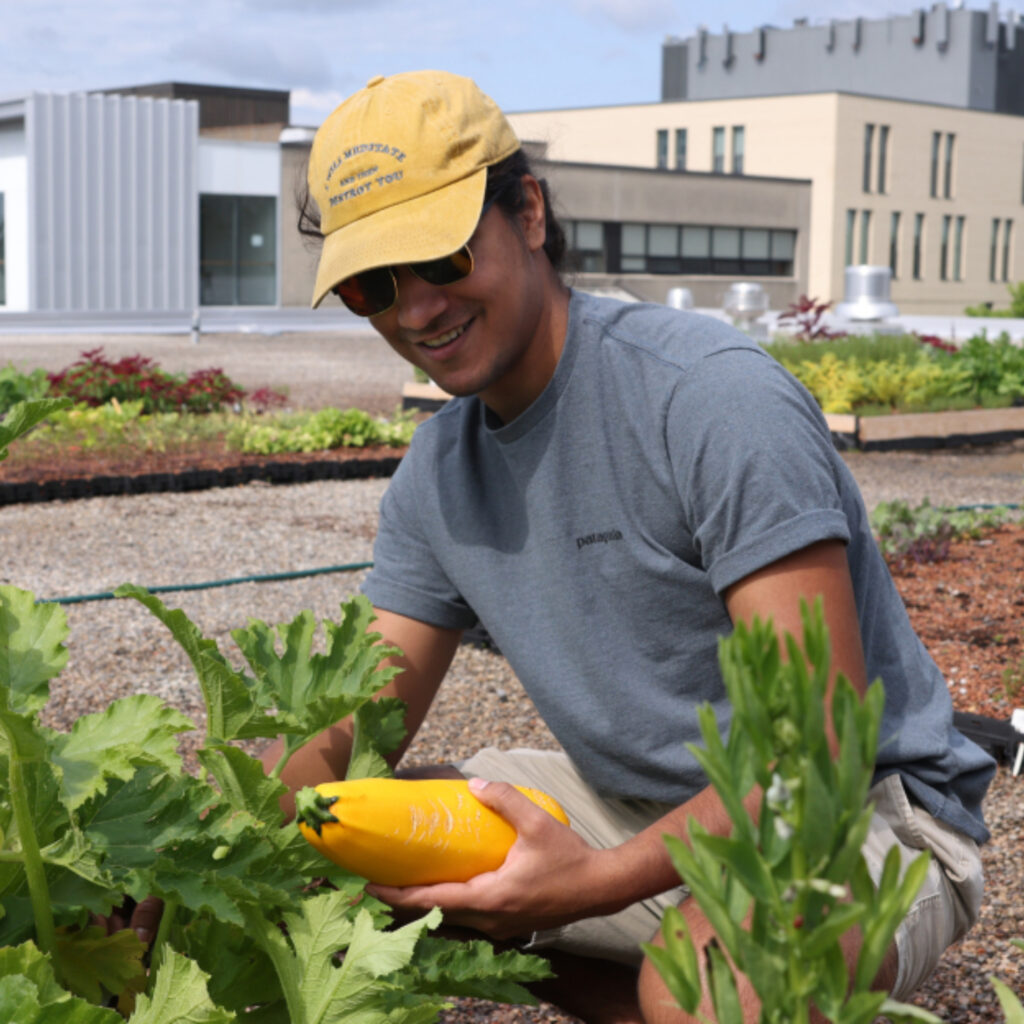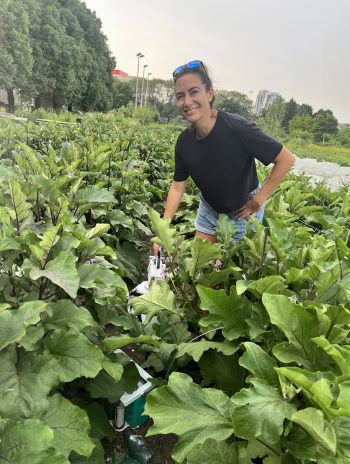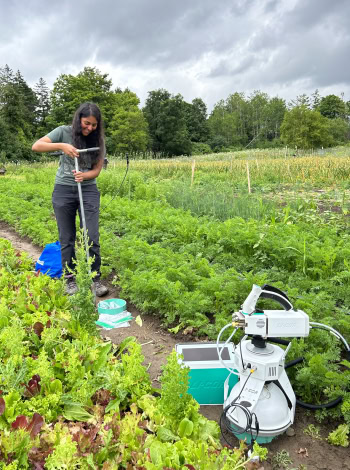The researchers also want to explore how sustainable agricultural practices – those that require less intensive use of fertilizers, pesticides and irrigation – in urban areas can help reduce GHG emissions compared to conventional agricultural systems. Isaac adds that greater urban food production might also help reduce the pressure on converting forests to farmland in rural areas, a major environmental concern and contributor to global GHG emissions.
The project is pulling together an interdisciplinary team of 15 researchers, including 11 from U of T, with expertise in soil biogeochemistry, crop biology, microbial ecology and urban food systems, among others. It also includes eight partner organizations from the private and public sectors that are involved in food production, food distribution and land management.
Adam Martin, a colleague of Isaac’s in the Department of Physical and Environmental Sciences and co-lead on the project, says urban farming isn’t about replacing large-scale agricultural systems that supply wheat, for example. Rather, it can produce relatively large quantities of fruits and vegetables that can bring economic benefits to households living in cities.
Martin says that improving access to food in urban areas also has a host of positive downstream effects.
“Local food banks rely heavily on local small-scale farms and community gardens for fresh produce and food bank use is on the rise,” he says, adding that many urban communities are located in “food deserts,” where the cost of accessing certain food, particularly fresh produce, is much higher than in other communities.




